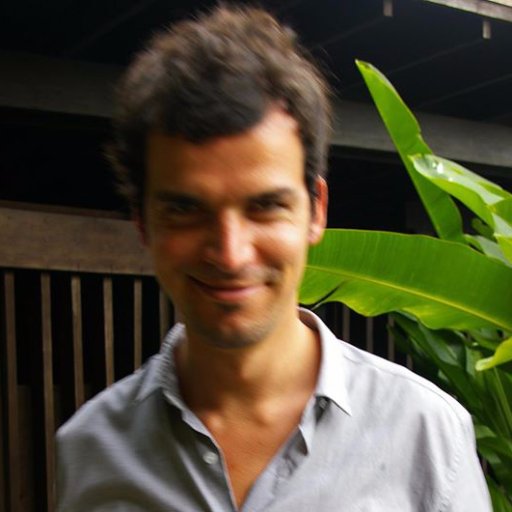
HelfrichLab
@HelfrichLab
Followers
1K
Following
296
Media
18
Statuses
154
Human Intracranial Cognitive Neuroscience & Neurology Lab, PI Randolph Helfrich, @dfg_public Emmy Noether Group @uni_tue, @uktuebingen, @TueNeuroCampus
Tübingen
Joined January 2022
New work from the lab now published in @NeuroCellPress
Online now: Structure in noise: Recurrent connectivity shapes neural variability to balance perceptual and cognitive demands in the human brain https://t.co/ETAqBwLSt9
0
3
8
#eNeuro: Kopf and colleagues directly tested whether MEG background activity reflects hyperexcitability in a patient cohort suffering from generalized epilepsy. Their results demonstrate that background activity does not constitute random noise, but reflects excitability
0
11
16
Work conducted at @TueNeuroCampus @uktuebingen @HIHTuebingen @uni_tue and funded by @HertieNeuroSci, @JungStiftung, @dfg_public and @MedTuebingen. In collab. with Pål Larsson and @linjj4. Thanks everyone! (7/7)
0
0
1
For more background on timescales, see @roxana_zeraati and @_rdgao excellent recent review on timescales. Also check out the summary in the ‘This Week in the Journal’ for a summary: https://t.co/gWnliGPeY7 (6/7)
jneurosci.org
The Role of Higher Visual Cortices in Texture Discrimination Corey Ziemba, Robbe Goris, Gabriel Stine, Richard Perez, Eero Simoncelli, and Anthony Movshon (see article e0349242024) As visual inform...
1
0
2
Lastly, several other groups recently investigated sleep timescales, including @mo_s_ameen and @Tomdonoghue or @AthinaTzovara who preprinted cool work on @biorxiv_neursci that jointly suggests that intrinsic timescales shape the brain state during sleep. (5/7)
1
0
3
We devised an iterative fitting approach to estimate these spectral ‘knees’ in 3 independent iEEG datasets, including publicly shared data by @Kai_J_Miller published in @PLOSCompBiol and @NatureHumBehav, which enabled validating and replicating our approach. Thanks! (4/7)
1
0
1
Turns out: It depends… The PSD exhibits multiple intrinsic timescales (‘knees’) that shape the 1/f decay function. Some of them are state-invariant, while others were state-specific. Moreover, 1/f behaviors differ between different brain regions, such as the MTL and PFC. (3/7)
2
0
0
We and others (e.g., @smpzzz) had previously observed that the spectral slope tracks the hypnogram, but results across studies varied with different fitting ranges (1-20 vs 30-50 Hz). We wondered where should we fit the spectral slope to define distinct sleep stages? (2/7)
1
0
1
Are different sleep stages only defined by neural oscillations? Our new work led by @JannaLendner now out in JNeuro @SfNJournals demonstrates that several aperiodic (intrinsic) timescales shape the iEEG power spectrum during sleep: https://t.co/aRpIxRtWDw (1/7)
jneurosci.org
Human sleep exhibits multiple, recurrent temporal regularities, ranging from circadian rhythms to sleep stage cycles and neuronal oscillations during nonrapid eye movement sleep. Moreover, recent...
2
17
54
A tradeoff between efficiency and robustness in the hippocampal-neocortical memory network during human and rodent sleep https://t.co/rVS2266Ofy
#neuroscience
0
7
25
Work funded by @DAAD_Germany, @JungStiftung and @HertieNeuroSci at @uni_tue, @MedTuebingen, @HIHTuebingen, @TueNeuroCampus in collab. with @JannaLendner, @linjj4 and friends (6/6)
0
0
1
Critically, we observed that sleep rebalanced information processing capacities. Population activity was also more efficient during task engagement, while it was drastically reduced during propofol anesthesia (5/6).
1
0
2
We estimated the processing capacity by normalizing population entropy to its theoretical maximum. On average, we found higher processing capacities in (i) humans than in rodents; in (ii) PFC than MTL and (iii) wakefulness > REM > NREM (4/6).
1
0
1
In 2018 @brendon_watson and @brainrhythms demonstrated a link between neural firing and high frequency activity during rodent sleep in @EJNeuroscience. We reanalyzed this dataset for this study. Thanks to the authors for sharing this data on https://t.co/fBgWhQfx1f (3/6)
1
2
6
We studied intracranial recordings from rodent and human hippocampus, OFC and mPFC (+ human dlPFC). We studied population activity in the high freq. range (70-150 Hz) that likely provides a suitable signal to bridge the gap between intracranial human and rodent recordings (2/6)
1
0
2
Does sleep free cognitive resources for efficient next-day processing? Are processing capacities similar in human and rodent sleep? How does the sleeping brain balance efficiency and robustness? New paper led by @HahnMic to answer these questions. https://t.co/hEKPqMzhJX (1/6)
1
11
42
Check by a 5yr journey of the lab in mice & humans, just up on bioRxiv! Post-ictal symptoms can be life-threatening, & basic mechanisms are mostly unclear. 1/2
biorxiv.org
Confusion, aphasia, and unaware wandering are prominent post-ictal symptoms regularly observed in temporal lobe epilepsy (TLE)[1][1]. Despite the potentially life-threatening nature of the immediate...
1
9
19
For more details and background information, see some of our recent work in @TrendsCognSci
https://t.co/cyUDIjXUcm and @ScienceAdvances
https://t.co/ZIEJ5VcfIZ (4/4)
science.org
Non-oscillatory brain activity during human REM sleep reconfigures neural dynamics to support memory consolidation.
0
0
2
We provide a perspective on how their findings in rodents might translate to humans and how nonoscillatory (aperiodic) activity complements sleep oscillations. Work at @HIHTuebingen, @uktuebingen, @TueNeuroCampus and funded by @HertieNeuroSci, @JungStiftung @dfg_public (3/4)
1
0
1
We discuss excellent new work by Parks, Schneider et al. in @NatureNeuro that sleep can be classified from short data on millisecond and micrometer scales, hence, challenging the traditional view that sleep is only defined by brain-wide oscillations https://t.co/YwGMhRLX57 (2/4)
nature.com
Nature Neuroscience - Parks, Schneider et al. show that brain states like sleep and wake can be reliably detected from milliseconds of neural activity in local regions in mice. Regions can briefly...
2
1
3








